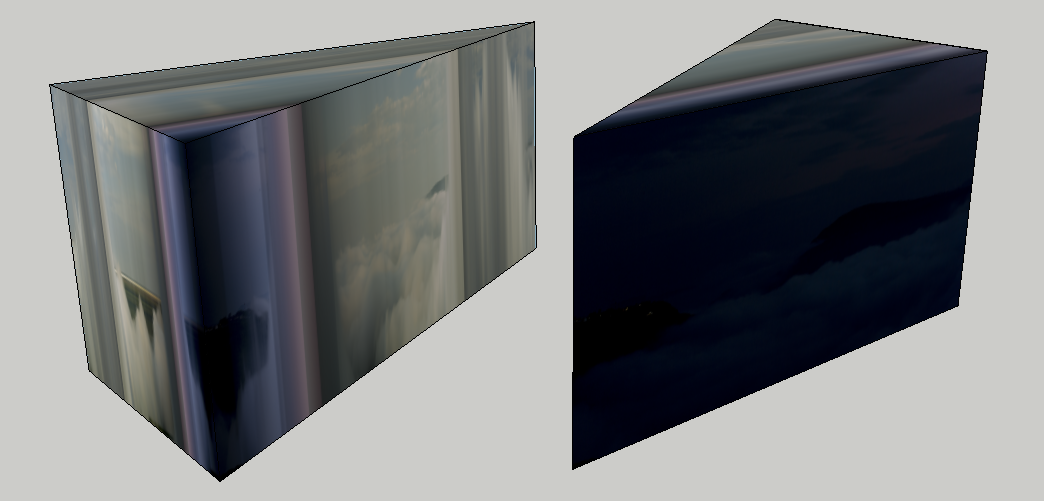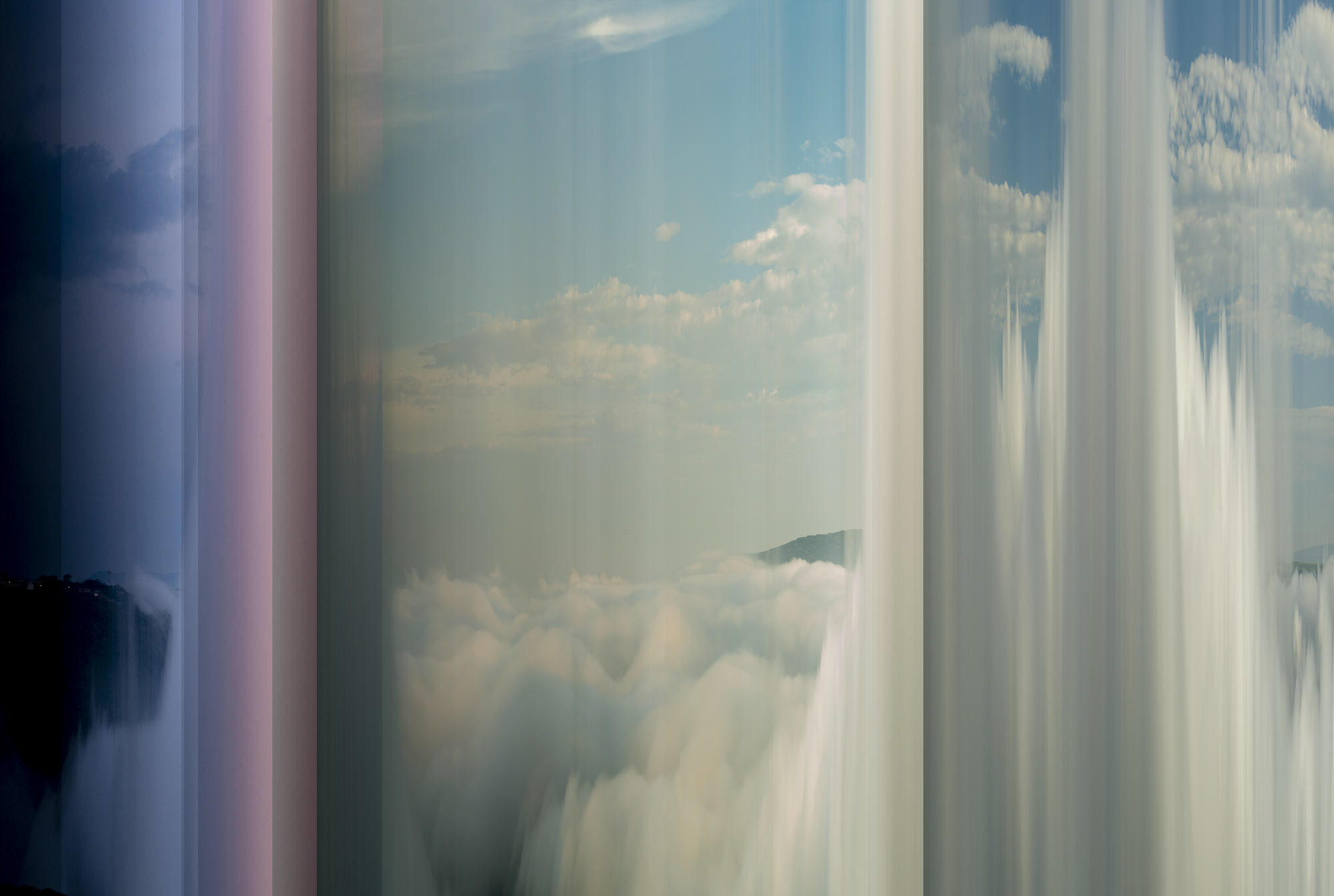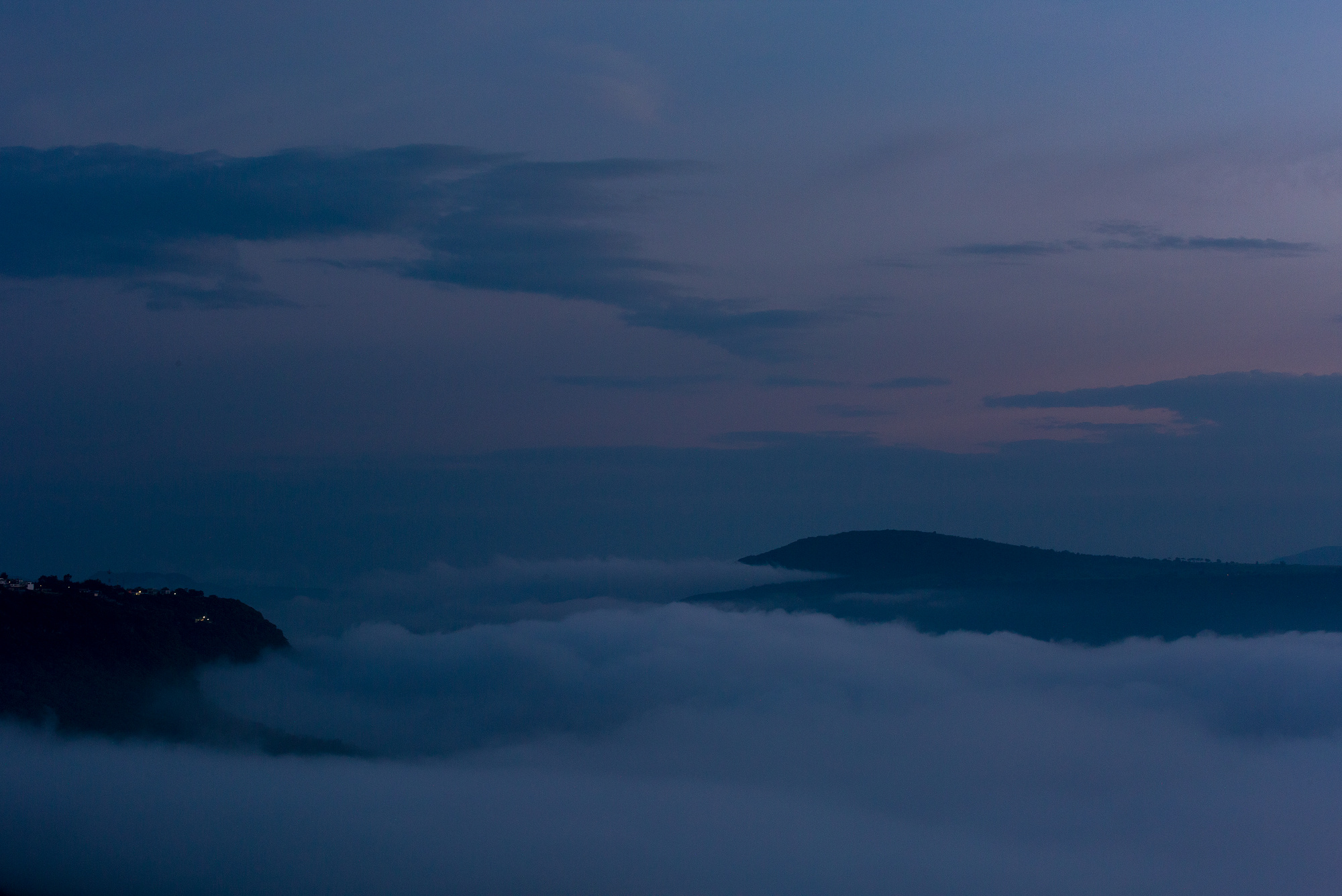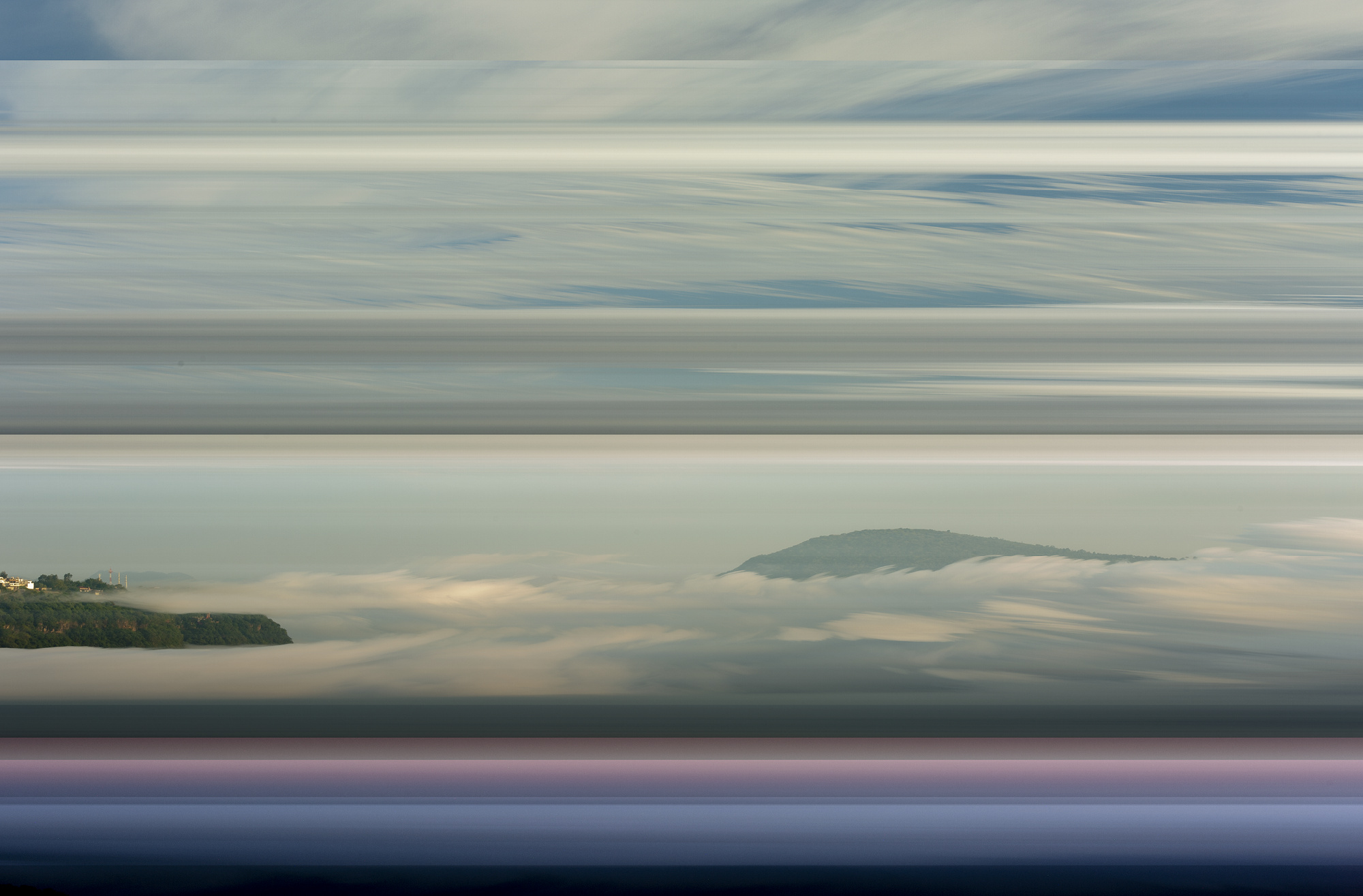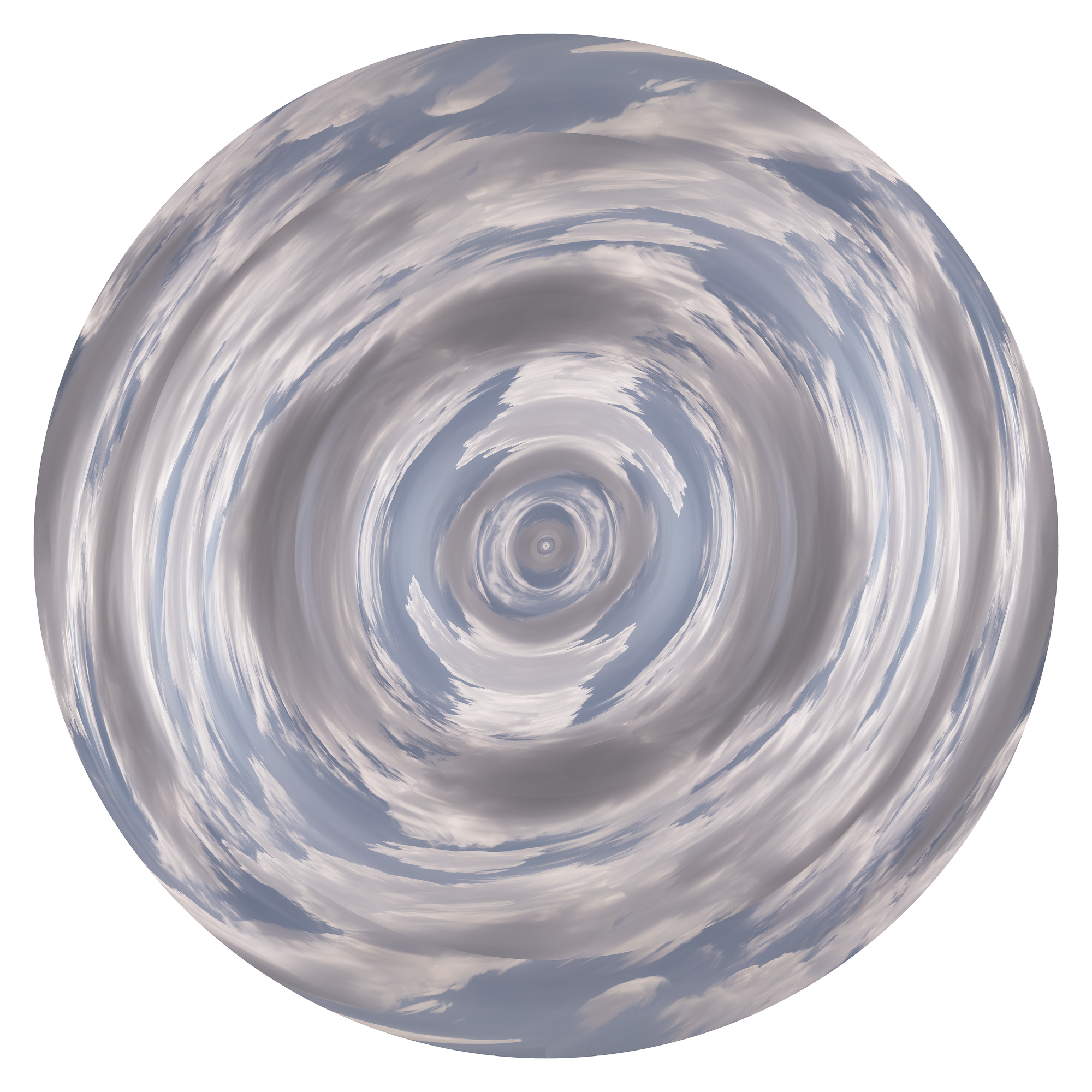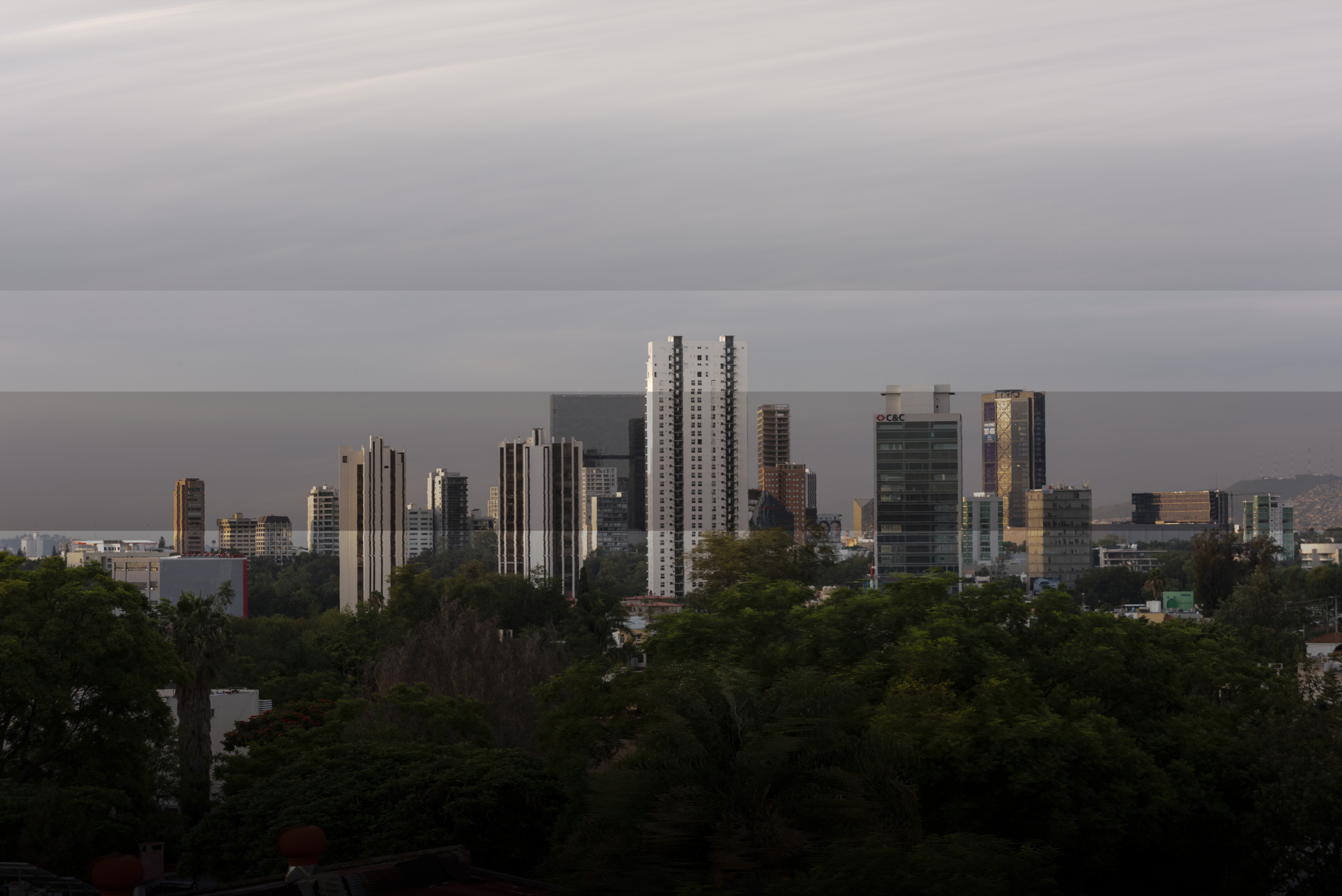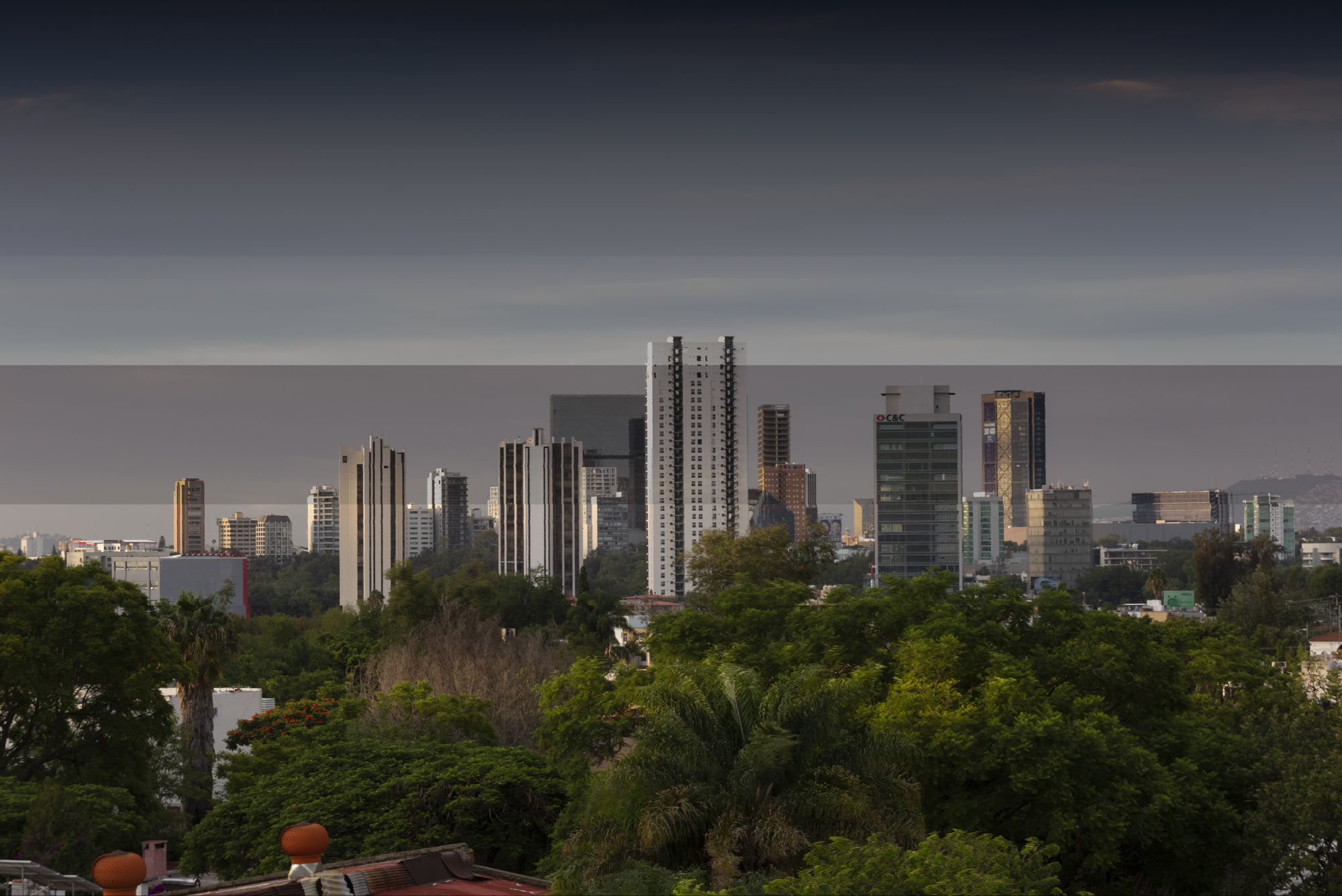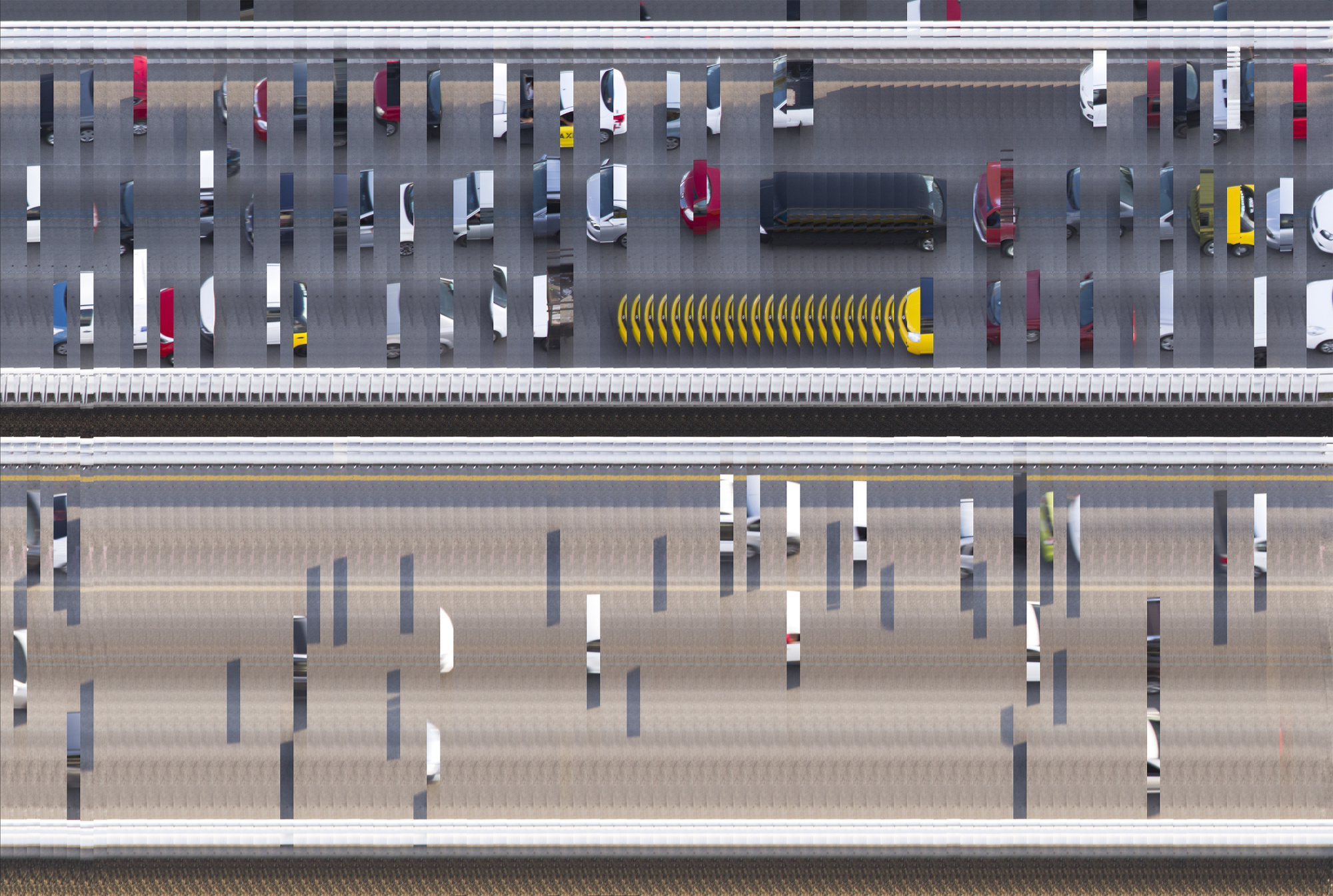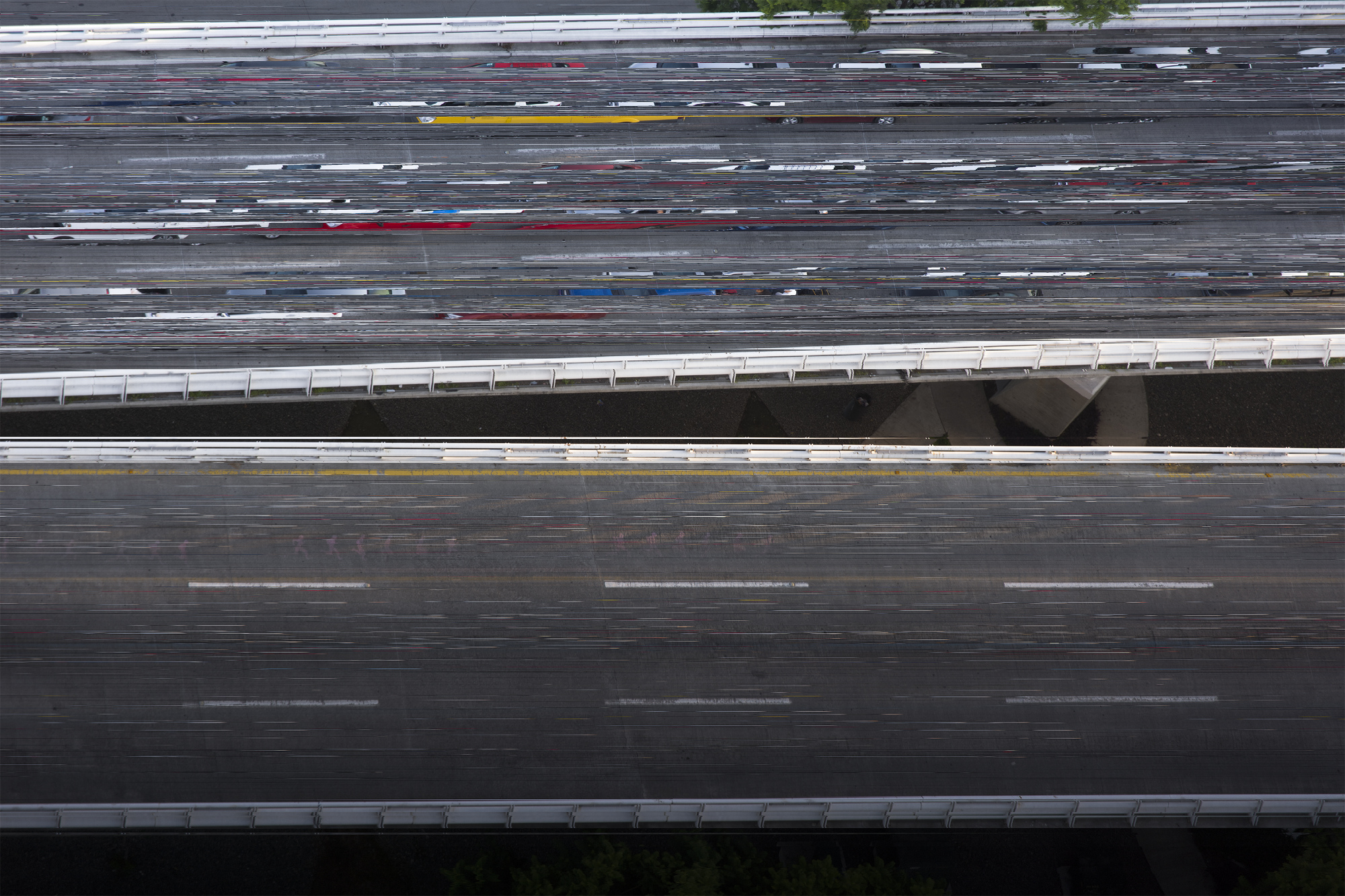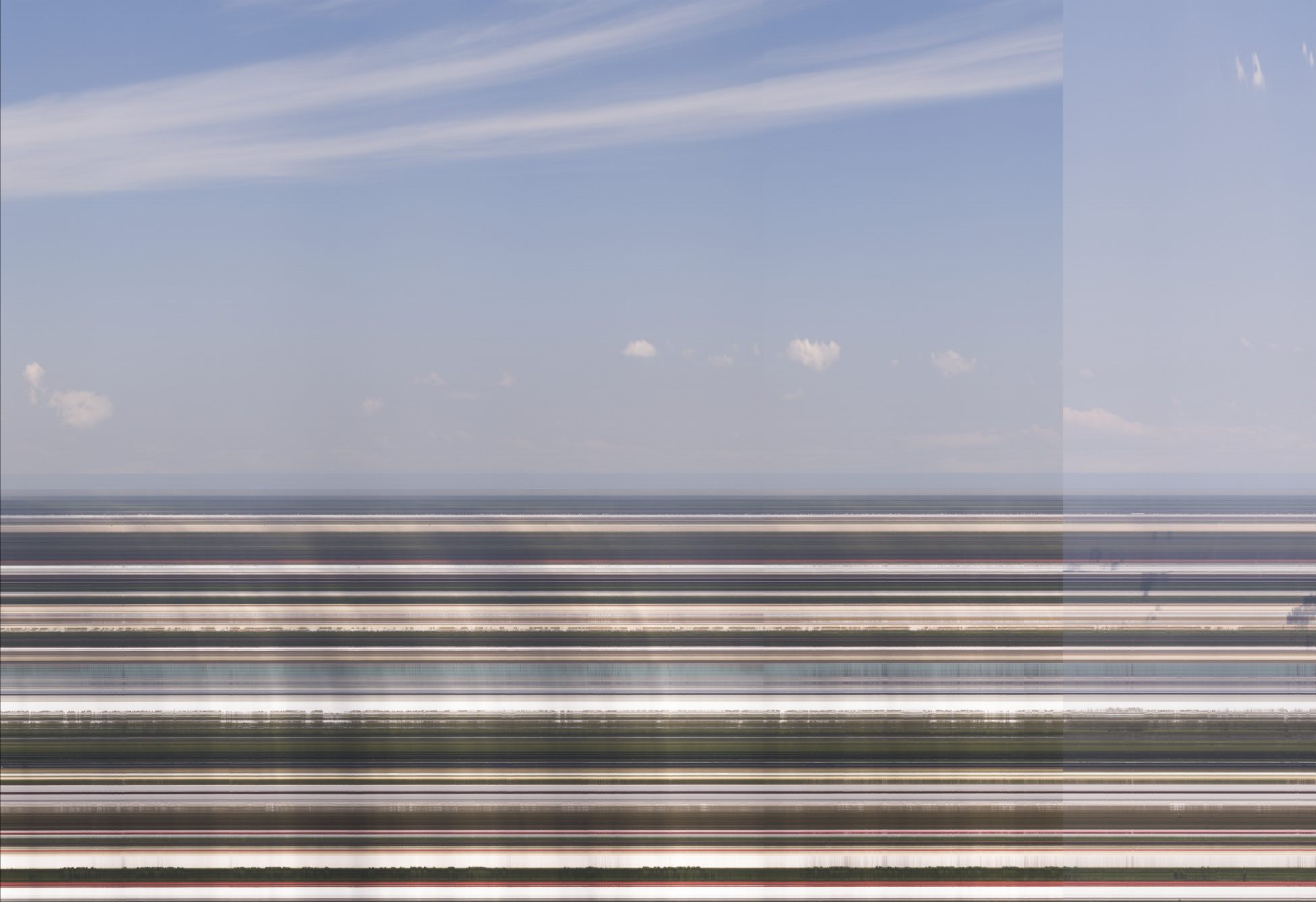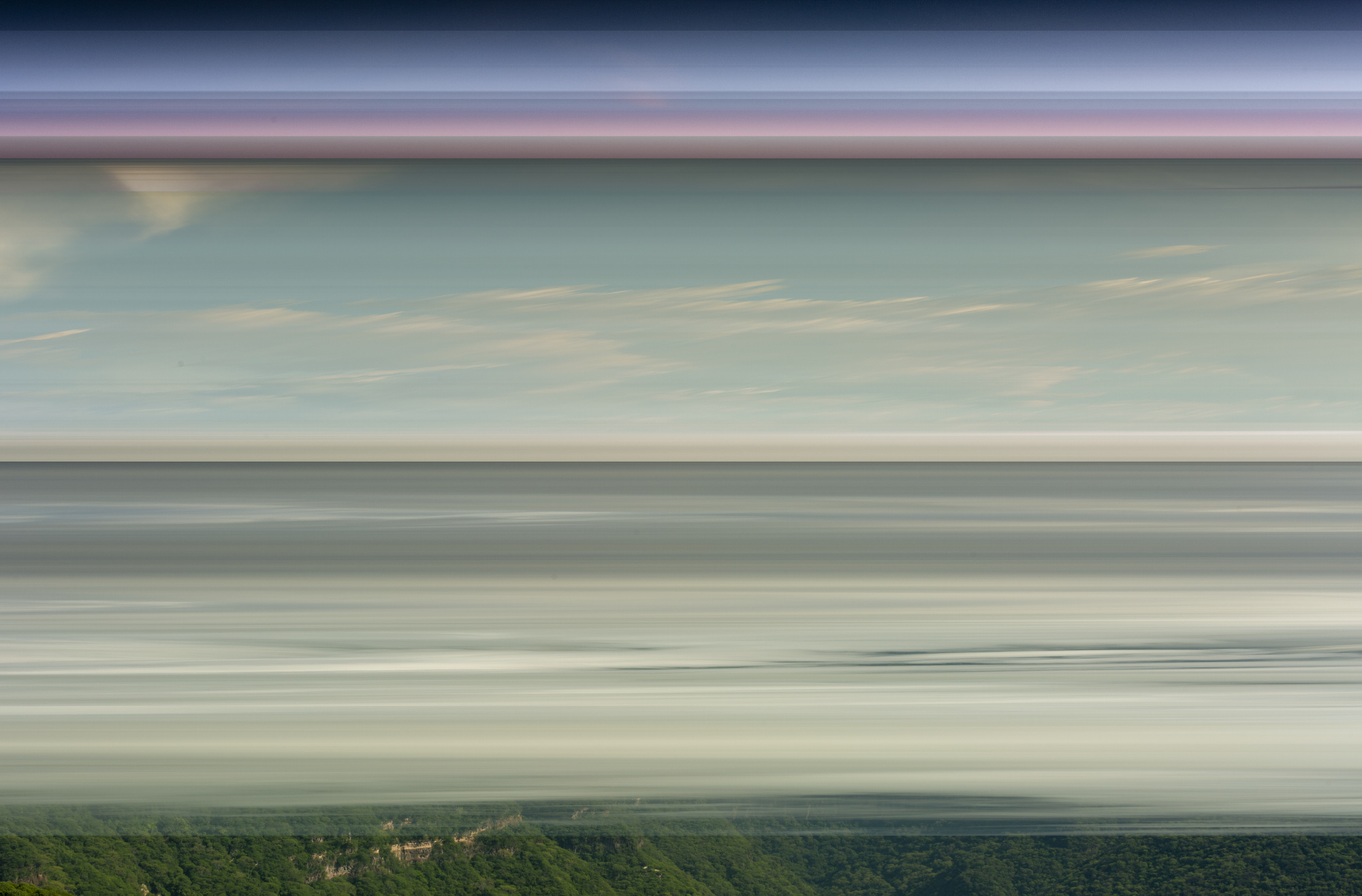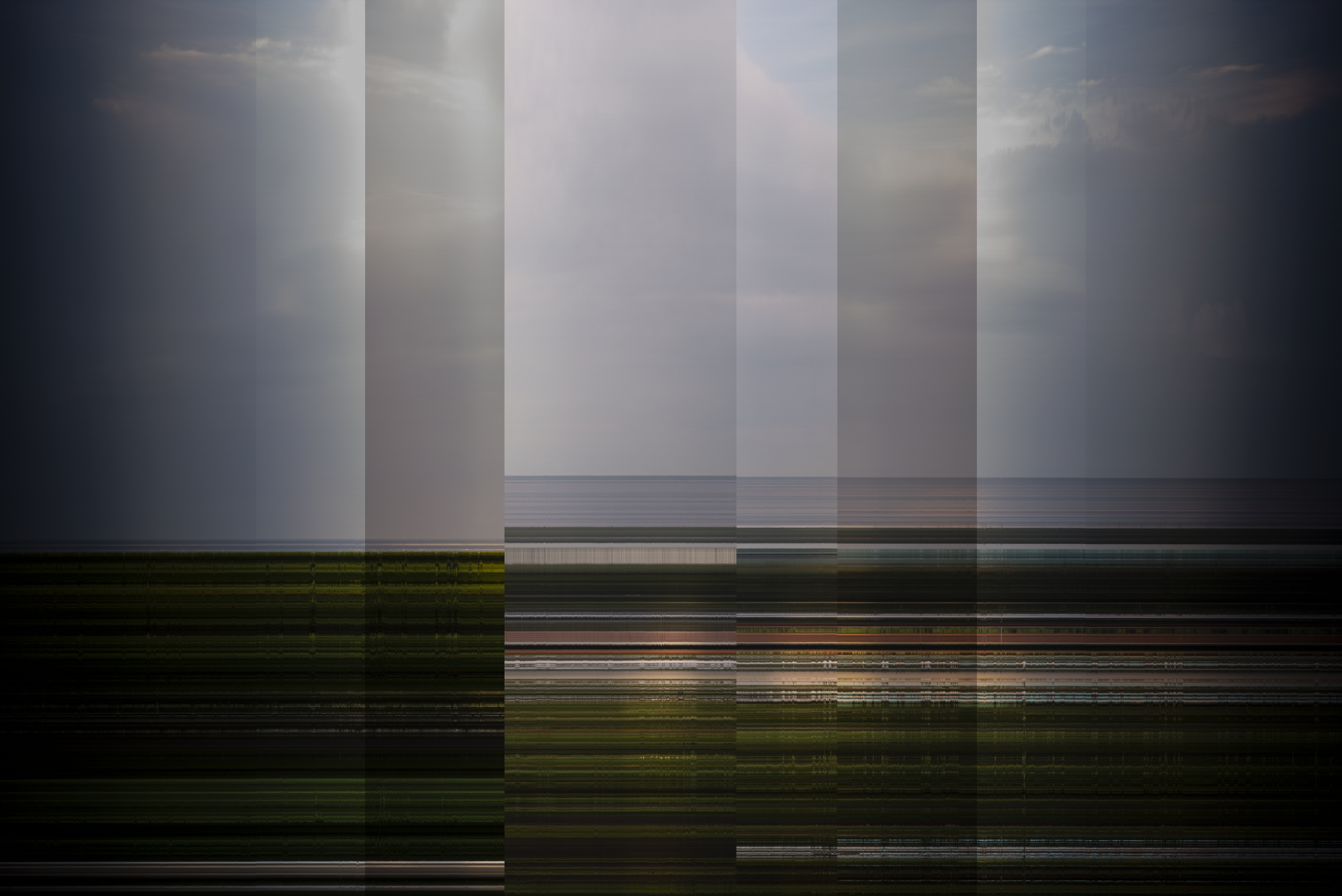paisaje desdoblado: paisaje
Since 2012 I have been interested in the political, symbolic and formal characteristics of Landscape. In 2013, for an art biennial in Bolivia, I produced a stereoscopic timelapse in which I played with the "shadows" based on a couple of ideas by the artist Marcel Duchamp: in one eye the course of dawn is presented towards dusk and in the other, from dusk towards dawn (both recorded in the same day) which will generate an instant in which both transitions coincide in time (creating a temporary hinge *), position of the sun and therefore in the perception of shadows (ultrafast delay *).
Later in 2015, doing research for another project, I interviewed an anthropologist who was doing her PhD on an Otomi Shaman, she shared that he analyzed the photographs she took during the rituals in order to verify whether their internal processes where still active or not in order to decide to show them, to wait longer or to destroy them. That unleashed many questions in me and I start wondering how can our western eye detect life in a photograph that we assume is still? When thinking about it and based on the timelapse project described above, I came up with a solution that relates ideas from Stephen Hawking, 4D projections into 2D (Duchamp again) and some bases of painting and photography, such as plot, montage, collage, etc. The main idea is to think of a conceptual object that comprises a collection of consecutive appearances of a landscape: a landscape-object. The source material is a set of photographs such as those used to produce timelapses so that a two-dimensional landscape can expand to a three-dimensional object that includes Time as an axis instead of Depth. This object could then be "cut" by digital means (so far) to obtain "slices" depicting landscapes that comprise consecutive temporal neighborhoods.
* Terms coined by Marcel Duchamp
link to the PDF Catalog
